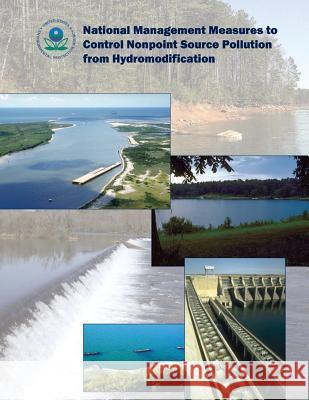National Management Measures to Control Nonpoint Source Pollution from Hydromodification » książka
National Management Measures to Control Nonpoint Source Pollution from Hydromodification
ISBN-13: 9781514308448 / Angielski / Miękka / 2015 / 298 str.
National Management Measures to Control Nonpoint Source Pollution from Hydromodification
ISBN-13: 9781514308448 / Angielski / Miękka / 2015 / 298 str.
(netto: 104,01 VAT: 5%)
Najniższa cena z 30 dni: 108,32 zł
ok. 16-18 dni roboczych
Bez gwarancji dostawy przed świętami
Darmowa dostawa!
The Nation's aquatic resources are among its most valuable assets. Although environmental protection programs in the United States have improved water quality during the past 35 years, many challenges remain. Significant strides have been made in reducing the impacts of discrete pollutant sources, but some aquatic ecosystems remain impaired, due in part to complex pollution problems caused by nonpoint source (NPS) pollution. Of special concern are the problems in our streams, lakes, estuaries, aquifers, and other water bodies caused by runoff that is inadequately controlled or treated. These problems include changes in flow, increased sedimentation, higher water temperature, lower dissolved oxygen, degradation of aquatic habitat structure, loss of fish and other aquatic populations, and decreased water quality due to increased levels of nutrients, metals, hydrocarbons, bacteria, and other constituents. USEPA (1993) defines hydromodification as the "alteration of the hydrologic characteristics of coastal and non-coastal waters, which in turn could cause degradation of water resources." Examples of hydromodification in streams include dredging, straightening, and, in some cases, complete stream relocation. Other examples include construction in or along streams, construction and operation of dams and impoundments, channelization in streams, dredging, and land reclamation activities. Hydromodification can also include activities in streams that are being done to maintain the stream's integrity such as removing snags. Some indirect forms of hydromodification, such as erosion along streambanks or shorelines, are caused by the introduction or maintenance of structures in or adjacent to a waterbody and other activities, including many upland activities, that change the natural physical properties of the waterbody. EPA has grouped hydromodification activities into three categories: (1) channelization and channel modification, (2) dams, and (3) streambank and shoreline erosion.
Zawartość książki może nie spełniać oczekiwań – reklamacje nie obejmują treści, która mogła nie być redakcyjnie ani merytorycznie opracowana.











